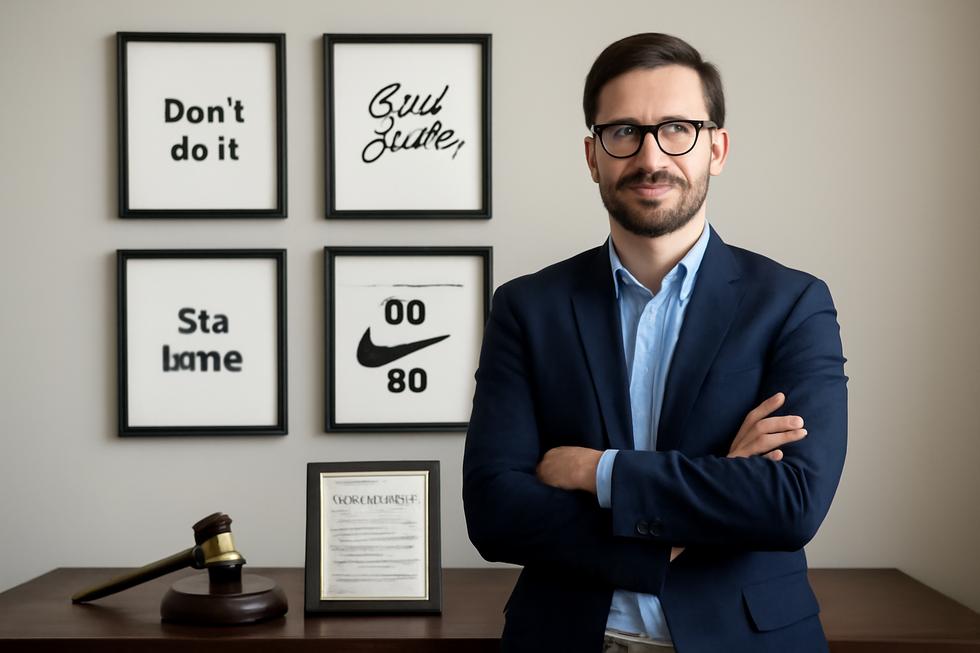Introduction
For business owners, unique sayings can become powerful branding tools that set a company apart and build loyal customer recognition. However, many entrepreneurs mistakenly believe that copyright law offers protection for these short phrases. The reality is that copyright law explicitly excludes sayings, slogans, and short expressions from coverage because they lack the creative originality and fixation required. This guide clarifies why copyright does not apply to sayings and introduces trademark law as the effective alternative for legal protection. Chapter 1 explains the legal rationale behind the inability to copyright a saying. Chapter 2 outlines how trademark law can protect your phrase as a distinctive brand element. Chapter 3 walks you through the trademark registration process specific to sayings. Finally, Chapter 4 addresses ongoing legal considerations and tips for maintaining your exclusivity over your trademarked phrase. Understanding these essential steps empowers you to safeguard your brand’s voice with confidence.
Tables of Contents
Chapter 1: Understanding why you cannot copyright a saying
- The Legal Framework Explaining Why Sayings Are Excluded from Copyright Protection
- Why Short Phrases and Sayings Lack Copyright Protection: Exploring Originality and Expression
- Why Copyright Fails But Trademark Protects Sayings Used in Commerce
- Why Copyright Law Excludes Sayings: The Legal Limitations on Short Phrases
- How Trademark Law Bridges the Gap: Protecting Sayings in Commerce and Branding
Chapter 2: How to copyright a saying: Using trademark law instead
- Why Copyright Law Falls Short for Sayings and How Trademark Law Bridges the Gap
- Navigating Trademark Law: The Essential Legal Path to Protecting Your Saying
- Navigating Trademark Registration: Protecting Sayings as Brand Identifiers
- Transforming Sayings into Valuable Brand Assets with Trademark Protection
- Navigating the Limitations and Complexities of Protecting Sayings with Trademarks
Chapter 3: The Trademark Registration Process for Protecting a Saying
- Choosing and Qualifying a Saying: Navigating Distinctiveness for Trademark Success
- Mastering Trademark Searches and Risk Assessment to Safeguard Your Saying
- Navigating Filing Tactics, Application Steps, and Classification Nuances to Trademark Your Saying
- Navigating USPTO Examination and Opposition: Legal Gatekeeping in Trademarking Sayings
- Sustaining and Defending Your Trademarked Saying: Maintenance, Enforcement, and Its Impact
Chapter 4: Legal considerations and maintaining protection when you copyright a saying
- Why Copyright Law Falls Short: Navigating the Legal Boundaries for Protecting Sayings
- Why Trademark Registration Is Crucial for Protecting Sayings Beyond Copyright
- Enforcing Trademark Rights to Safeguard Your Saying from Infringement
- Navigating Digital Enforcement: Online and Technological Strategies for Protecting Sayings
- Balancing Economic Growth and Societal Interests Through Legal Protections of Sayings
Chapter 1: Understanding why you cannot copyright a saying
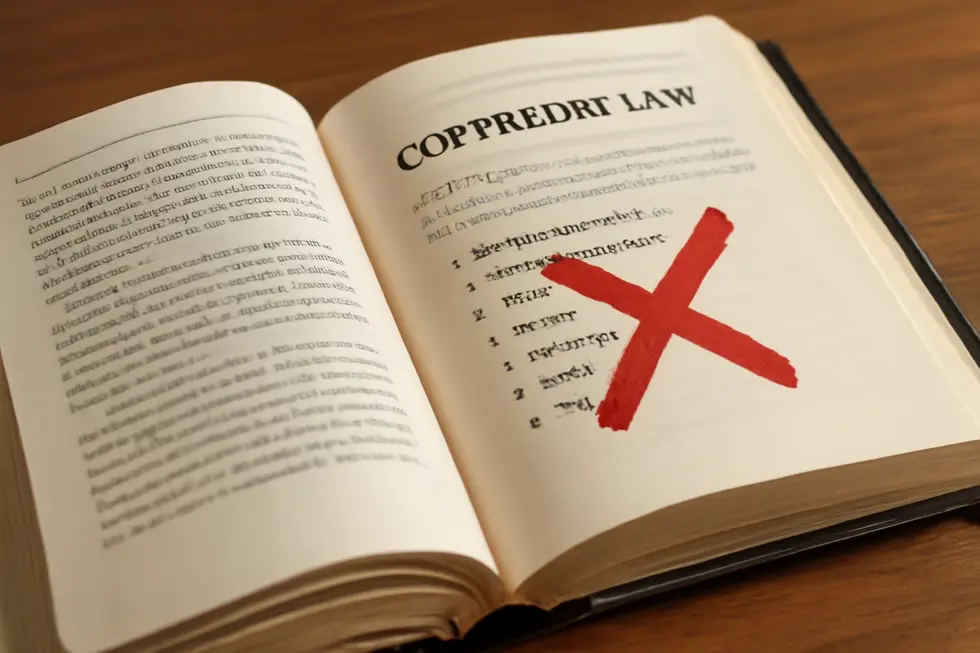
1. The Legal Framework Explaining Why Sayings Are Excluded from Copyright Protection
Copyright law is designed to protect original expressive works fixed in tangible form, such as books, music, or artwork. However, sayings are generally too brief and lack the necessary originality to be covered. Legally, short phrases and common expressions fall under the exclusion outlined in Section 102(b) of the U.S. Copyright Act, which prohibits copyright on ideas, methods, or concepts, including short phrases. This limitation follows the idea–expression dichotomy that keeps basic linguistic tools free for public use. Protecting sayings as copyright would also conflict with patent principles requiring novelty and inventiveness. Therefore, copyright only safeguards sufficiently creative, fixed expressions, not brief, generic sayings. For more guidance on copyright distinctions, see the detailed explanation at copyright law and public domain.
2. Why Short Phrases and Sayings Lack Copyright Protection: Exploring Originality and Expression
Copyright law protects original creative works fixed in a tangible form, such as books, music, or artwork. However, short phrases, common sayings, and slogans generally lack the necessary originality and creativity to qualify. The fundamental legal principle behind this is the idea–expression dichotomy: copyright safeguards the unique expression of ideas, not the ideas themselves nor brief, familiar expressions.
Sayings are too brief to contain enough creative authorship and are often viewed as common language available for public use. Thus, they fall outside the scope of copyright protection. Instead, those wishing to secure exclusive rights over a saying should consider trademark law, which can protect distinctive phrases used to identify goods or services commercially. This distinction preserves creative originality while keeping common language free for all.
For a clearer overview of originality and expression within copyright law, the guide on copyright basics provides valuable insights.
3. Why Copyright Fails But Trademark Protects Sayings Used in Commerce
Copyright law protects original creative works fixed in a tangible form, such as books, music, and art, but it explicitly excludes short phrases, slogans, or sayings. This is because these brief expressions lack the necessary originality and fixation required for copyright eligibility. Courts have consistently ruled that simple sayings do not qualify for copyright protection. Instead, trademark law offers a practical alternative for safeguarding sayings that serve as brand identifiers. When a saying is used distinctively to identify and distinguish goods or services in commerce, it can be registered as a trademark. This registration grants exclusive rights to use the phrase commercially, preventing confusingly similar marks from infringing on the brand. Understanding this distinction clarifies why copyright cannot protect sayings, while trademark law plays a crucial role in legally securing unique expressions linked to a business. For more on these differences, see detailed insights on copyright vs trademark protections.
4. Why Copyright Law Excludes Sayings: The Legal Limitations on Short Phrases
Copyright law does not protect sayings, short phrases, or slogans because these expressions lack the originality and creativity required for copyright protection. Copyright safeguards original works fixed in tangible form, such as books or music, but sayings are often too brief to qualify. The U.S. Copyright Office explicitly excludes titles, names, and short phrases since they are considered mere ideas or common language rather than original authorship. Moreover, extending copyright protection to short phrases would hinder free speech and communication by restricting everyday language use. Instead, legal protection for distinctive sayings used in commerce falls under trademark law, which safeguards phrases that identify goods or services. This distinction reflects copyright’s focus on protecting creative works rather than short, commonly used expressions. For additional insights into copyright limitations, see copyright information for books.
5. How Trademark Law Bridges the Gap: Protecting Sayings in Commerce and Branding
Copyright law excludes short sayings because it protects original, fixed works, which brief phrases generally lack. Instead, trademark law offers protection when a saying distinctly identifies goods or services in commerce. This legal distinction affects branding strategies, as companies must rely on trademark registration to secure exclusive use of a phrase connected to their business. However, trademark protection is limited to phrases that are distinctive, non-generic, and actively used commercially. Without ongoing use and enforcement, trademarks can be lost through abandonment or becoming generic terms. Moreover, trademark protection prevents consumer confusion rather than granting universal rights to phrases. Businesses should therefore focus on crafting distinctive sayings and maintaining consistent commercial use and legal defense. For detailed guidance on trademarking phrases and the nuances of copyright limitations on sayings, refer to the comprehensive resource on trademark and copyright distinctions found at trademark2go.com/copyright-phrase-slogan.
Chapter 2: How to copyright a saying: Using trademark law instead
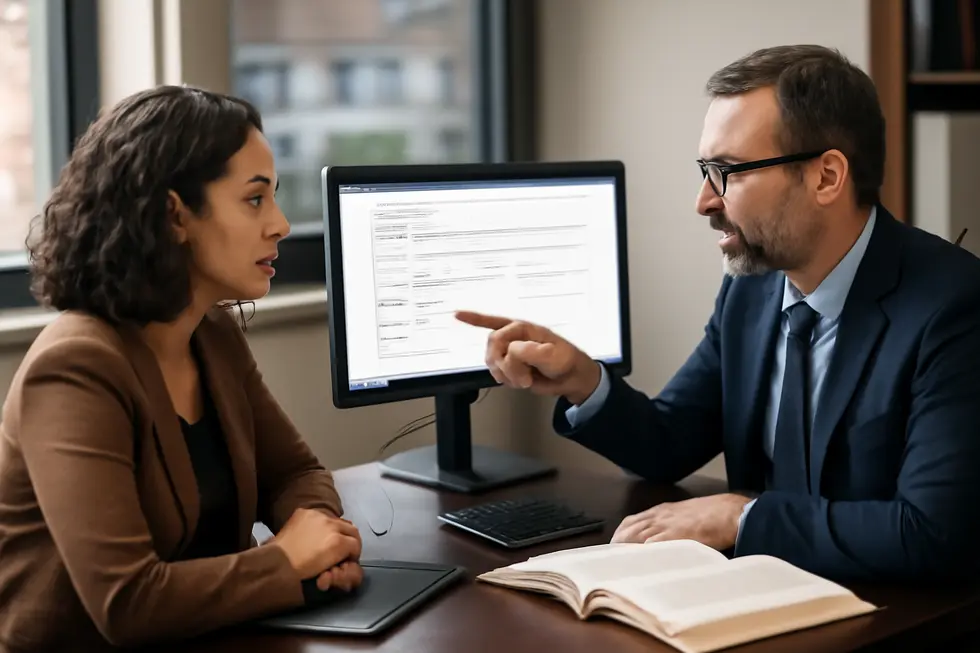
1. Why Copyright Law Falls Short for Sayings and How Trademark Law Bridges the Gap
Copyright law protects original creative works expressed in a fixed form, such as books, music, and artwork, but it explicitly excludes short phrases, slogans, or sayings from protection. This is because copyright safeguards expressions of ideas, not the ideas themselves or minimal components like individual words or brief sayings, which lack the necessary originality and fixation. Sayings typically serve a functional or informational purpose rather than constituting a creative work, making them ineligible for copyright. Instead, trademark law provides the proper route for protecting sayings when they act as brand identifiers in commerce. When a saying distinguishes goods or services and is used in the marketplace, it can be trademarked to prevent competitors from using confusingly similar phrases. However, trademark protection involves requirements such as distinctiveness and use within specific business categories, and it does not offer universal rights outside those contexts. For business owners seeking to safeguard a phrase that promotes their brand, understanding this distinction is critical. Additional insights on protecting slogans through trademark law can be found in related resources like copyright phrase slogan.
2. Navigating Trademark Law: The Essential Legal Path to Protecting Your Saying
While copyright law excludes short sayings from protection, trademark law offers a viable legal route to safeguard a phrase used in commerce. Unlike copyright, which protects original creative works fixed in tangible form, trademark law grants exclusive rights to words or phrases that serve as brand identifiers. To qualify, a saying must distinguish goods or services and avoid being generic or merely descriptive. Common law trademark rights arise naturally through actual use in commerce but are limited in scope and enforcement. Federal registration through the USPTO strengthens these rights by providing nationwide protection, legal presumptions of ownership, and enforcement mechanisms in federal court. The registration process involves submitting an application, demonstrating the phrase’s commercial use, and paying associated fees. Proper use of trademark symbols also signals ownership and supports legal claims. For practical insights and detailed steps on trademark registration, exploring resources such as this guide on trademark protection for business names and logos can be invaluable.
3. Navigating Trademark Registration: Protecting Sayings as Brand Identifiers
To secure legal protection for a saying under trademark law, you must register it with the United States Patent and Trademark Office (USPTO). Begin by selecting a distinctive phrase that consumers readily associate with your goods or services, avoiding generic terms. Conduct a thorough search using the USPTO’s Trademark Electronic Search System (TESS) to ensure no similar marks exist. Next, accurately identify the appropriate trademark class representing your products or services, as protection is class-specific. You can file based on actual commercial use or intent to use, the latter requiring eventual commercial application within a year. Submit a detailed online application via the USPTO’s Trademark Electronic Application System (TEAS), including the phrase, associated goods or services, and a specimen demonstrating use in commerce, such as advertising or packaging. After the USPTO examination and a public opposition window, successful registration grants exclusive nationwide rights to the phrase in your class and the right to enforce it. Remember, maintenance filings and renewals every ten years are essential to keeping your trademark active. This process offers the practical path to protect sayings as distinctive brand elements, unlike copyright which does not cover short phrases. For a more in-depth guide, see this resource on trademark law for business owners.
4. Transforming Sayings into Valuable Brand Assets with Trademark Protection
Trademark law offers vital economic advantages when protecting a saying, unlike copyright, which excludes short phrases. Registering a saying as a trademark grants exclusive rights to its use in commerce, building strong brand identity and customer loyalty. This exclusivity prevents competitors from using confusingly similar phrases, reducing market confusion and strengthening the brand’s reputation. Moreover, trademarked sayings can generate revenue through licensing agreements, turning them into valuable intangible assets. Such protection provides nationwide legal enforcement, empowering businesses to pursue infringement claims and defend their market position effectively. However, managing trademarks requires care to avoid dilution or misuse that might weaken the saying’s commercial value. Overall, trademark protection transforms simple sayings into powerful commercial tools that underpin brand differentiation and economic growth. For an in-depth explanation of the trademark process, see this reliable trademarking a phrase resource.
5. Navigating the Limitations and Complexities of Protecting Sayings with Trademarks
While trademark law offers a pathway to protect sayings, enforcement presents notable hurdles. Trademark rights apply strictly to specific goods or services, limiting protection to commercial use and preventing exclusive control over the phrase in unrelated contexts. Owners must prove a saying’s distinctiveness or its acquired secondary meaning as a brand identifier, which can be challenging for common or descriptive phrases. Maintaining these rights requires continuous monitoring and swift action against infringement, often involving costly legal disputes to address consumer confusion or brand dilution. Unlike copyright, trademark does not shield against unauthorized reuse in creative works or non-commercial settings, restricting enforcement scope. Understanding these constraints is essential for developing an effective trademark protection strategy tailored to a saying’s use in commerce. For authoritative guidance, consulting specialized trademark resources can clarify complex nuances behind enforcement obligations and rights. For more insight, see this detailed discussion on trademark protection for business names and logos.
Chapter 3: The Trademark Registration Process for Protecting a Saying
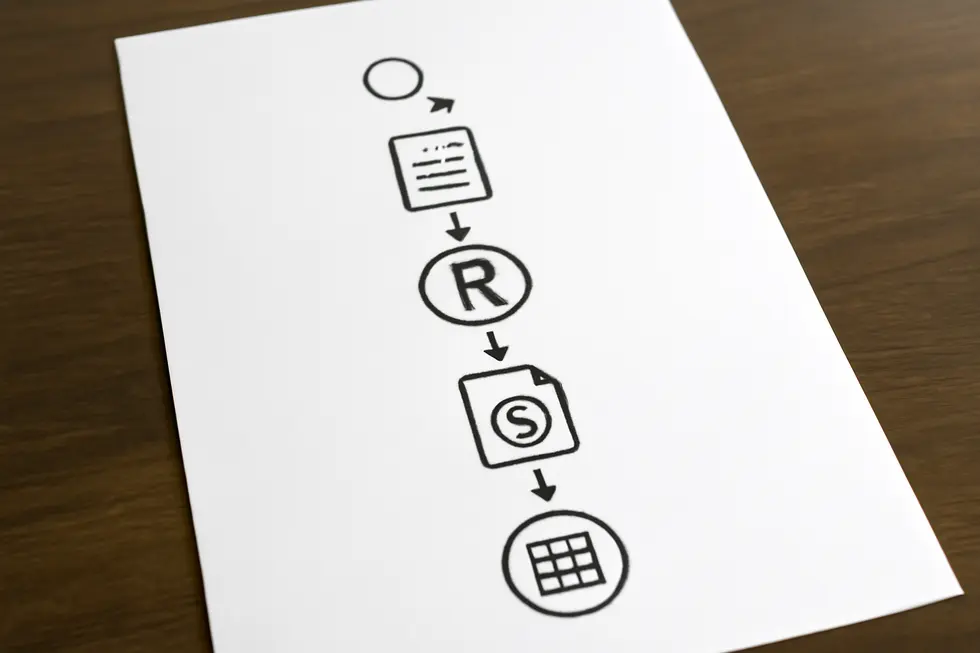
1. Choosing and Qualifying a Saying: Navigating Distinctiveness for Trademark Success
Securing trademark protection for a saying begins with carefully choosing a phrase that can uniquely identify your goods or services. The phrase must avoid generic or purely descriptive terms unless it has gained a secondary meaning—where the public specifically associates it with your business. Conducting a comprehensive trademark search, using resources like the USPTO Trademark Electronic Search System, is critical to confirm the phrase is not already in use or confusingly similar to existing trademarks. Trademark law classifies marks by distinctiveness, from fanciful and arbitrary (offering the strongest protection), to suggestive, descriptive, and generic (which cannot be protected). Understanding these categories helps determine if your saying qualifies for registration. Applications may be filed based on actual commercial use or intent to use, and federal registration grants nationwide exclusive rights, legal presumptions of ownership, and enforcement power. For more on how to protect phrases in business, the resource on trademark protection for business names and logos offers valuable insights.
2. Mastering Trademark Searches and Risk Assessment to Safeguard Your Saying
Before filing a trademark application to protect a saying, a comprehensive trademark search and risk analysis is essential. This process goes beyond checking exact matches; it includes variations, such as alternate spellings, abbreviations, and phonetic equivalents, especially within the relevant goods or services classes. Identifying existing registered trademarks is critical, but so is uncovering unregistered, common law uses that could pose legal conflicts. The goal is to assess the likelihood of confusion with existing marks by examining visual, phonetic, and conceptual similarities to reduce chances of trademark office refusals or infringement risks. Strong distinctiveness, through creativity or coined phrases, enhances protection but demands thorough clearance. When uncertainties or potential conflicts arise, consulting a trademark attorney can clarify risks and inform strategic choices. Conducting this diligent search safeguards your saying from costly legal challenges and lays a secure foundation for registration. For further insight, explore detailed guidance on the trademark application and search process.
3. Navigating Filing Tactics, Application Steps, and Classification Nuances to Trademark Your Saying
Successfully trademarking a saying requires a strategic approach encompassing phrase selection, precise application procedures, and careful classification. Start by choosing a distinctive phrase that clearly identifies your brand, steering clear of generic or descriptive language. Conduct a thorough search with the USPTO’s Trademark Electronic Search System (TESS) to avoid conflicts with existing marks. Filing can be based on current commercial use or intent to use, with the latter demanding additional documentation later. The online application necessitates submitting the phrase exactly as used, accompanied by a specimen exemplifying its commercial use, such as on packaging or advertising. USPTO examiners review the application for compliance and potential conflicts before publication, allowing third parties to oppose within 30 days. A critical challenge lies in selecting the proper class from the Nice Classification system, covering 45 categories of goods and services. Accurate classification is essential to secure suitable protection without overlap or rejection. Understanding this comprehensive process is vital for effectively protecting your saying through trademark registration. For further insight on trademark protection, consult trusted resources specialized in trademark law.
4. Navigating USPTO Examination and Opposition: Legal Gatekeeping in Trademarking Sayings
The trademark registration process for protecting a saying is a carefully structured journey guided by the United States Patent and Trademark Office (USPTO). Once an application is submitted, a USPTO examining attorney rigorously evaluates the saying to verify it meets legal standards, primarily assessing its distinctiveness and ensuring it does not conflict with existing trademarks. If the examiner approves, the mark is published in the USPTO’s Official Gazette, opening a 30-day window for opposition. During this period, other parties can challenge the registration if they believe the mark infringes on their rights or causes confusion. The USPTO’s role extends beyond administration; it ensures that only trademarks meeting stringent criteria secure federal protection. Successful passage of examination and opposition stages grants the saying trademark registration, conferring nationwide exclusive rights and a presumption of ownership essential for future enforcement. For a deeper understanding of this process, explore detailed resources on trademark protection for business names and logos.
5. Sustaining and Defending Your Trademarked Saying: Maintenance, Enforcement, and Its Impact
Registering a trademark for a saying begins a continuous journey of maintenance and protection. After registration, the trademark owner must actively use the saying in commerce to uphold rights, ensuring the mark is applied consistently to original goods or services. Renewal filings and fees, typically every 10 years, are mandatory to avoid cancellation. Vigilant legal enforcement is crucial; owners monitor for unauthorized use and often begin with cease-and-desist demands before pursuing federal lawsuits. Legal protection through registration strengthens claims, allowing remedies like damages and customs intervention against counterfeits. Beyond legalities, trademarking a saying shapes brand identity and safeguards consumers from confusion. Still, it must balance against free speech and creative expression concerns, with laws varying internationally. Mastering this lifecycle ensures distinctive sayings remain powerful, protected assets. For further insights on trademark protection, consider exploring trademark protection for business names and logos.
Chapter 4: Legal considerations and maintaining protection when you copyright a saying
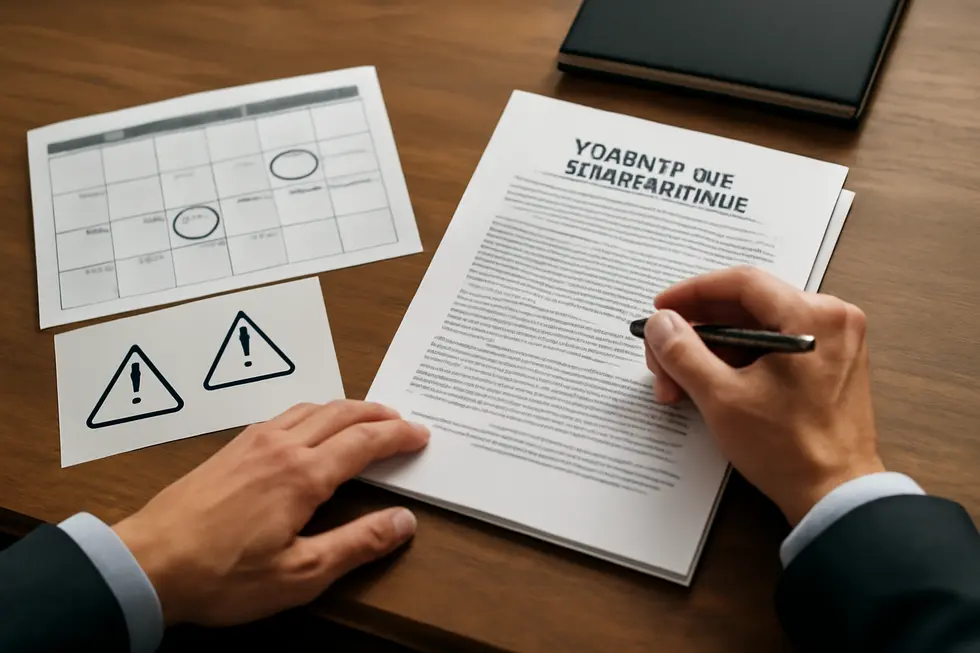
1. Why Copyright Law Falls Short: Navigating the Legal Boundaries for Protecting Sayings
Copyright law specifically excludes short sayings or phrases from protection because they lack the originality and fixation required. These brief expressions are considered ideas rather than creative works fixed in tangible form, thus they cannot be copyrighted. Instead, trademark law serves as the appropriate legal pathway to protect distinctive sayings, particularly when used to identify goods or services in commerce. Registering a saying as a trademark provides exclusive rights to prevent others from using confusingly similar phrases and ensures ongoing legal protection with renewals. Understanding these legal distinctions is crucial to effectively securing rights over sayings, as attempts to copyright such phrases will not succeed. For detailed guidance on protecting phrases commercially, exploring trademark registration options is essential. Further insights can be found at copyright phrase and slogan protections.
2. Why Trademark Registration Is Crucial for Protecting Sayings Beyond Copyright
Copyright law does not extend to short phrases or slogans, meaning a saying itself cannot be truly copyrighted. While copyright protects the specific creative expression fixed in a tangible form, it does not prevent others from using the same phrase commercially. To secure exclusive rights over a saying as a brand or slogan, registering it as a trademark is essential. Trademark registration establishes public proof of ownership and grants legal rights to prevent others from using confusingly similar phrases in commerce. Unlike common law rights gained merely through use, a federal trademark registration offers nationwide protection and stronger enforcement options, including lawsuits and damages. Iconic slogans protected as trademarks demonstrate how this legal tool safeguards a saying’s value in the marketplace. Thus, for anyone seeking lasting commercial exclusivity over a saying, formal trademark registration is a vital step to ensure effective and enforceable protection. For more on how trademarks protect sayings, see trademark protection business name logo.
3. Enforcing Trademark Rights to Safeguard Your Saying from Infringement
Because copyright law does not protect short sayings, maintaining exclusive rights over a phrase depends on trademark law. To secure and enforce these rights, first register your saying as a trademark with the USPTO. Registration grants nationwide protection and a strong legal presumption of ownership, vital for preventing unauthorized use in commerce. Beyond registration, actively using the phrase in connection with your goods or services helps build and preserve common-law trademark rights, although federal registration offers stronger safeguards. Vigilant marketplace monitoring enables early detection of potential infringement, allowing prompt responses such as cease-and-desist letters. If necessary, legal action can stop continued violations and recover damages. Equally important is adhering to renewal deadlines and consistently using your trademark to avoid cancellation. Understanding these key enforcement strategies ensures your saying remains a distinctive symbol of your brand. For an insightful overview, consult the resource on trademark protection for business names and logos.
4. Navigating Digital Enforcement: Online and Technological Strategies for Protecting Sayings
Maintaining legal protection for a saying online demands understanding the distinct roles of copyright and trademark laws. Copyright rarely covers short sayings since they lack sufficient originality; trademarks often offer stronger protection when sayings identify commercial goods or services. Online, the Digital Millennium Copyright Act (DMCA) empowers rights holders to issue takedown notices to halt unauthorized uses, leveraging safe harbor provisions to compel platform compliance. However, these measures require diligent monitoring and are limited internationally. Technological deterrents like disabling right-click or hotlink protection can reduce casual infringement but are imperfect and may affect user engagement. Distinguishing copyright infringement from unauthorized copying—such as “freebooting” on social media—is key to selecting effective responses. Additionally, AI-generated content currently lacks protection due to the need for human authorship, influencing how sayings created or replicated by AI are handled legally. Combining these online enforcement tools with trademark registration delivers a more robust framework for safeguarding sayings in digital commerce. For more on trademark protections for phrases, consider reviewing trademark-focused resources like trademark2go.com/can-you-copyright-a-saying/.
5. Balancing Economic Growth and Societal Interests Through Legal Protections of Sayings
Copyright law excludes short phrases and sayings as protectable works, shifting legal focus to trademark law for safeguarding slogans used in commerce. This distinction has significant economic and societal ramifications. Economically, securing trademark rights in a saying incentivizes innovation and brand development, fostering market competition and growth. Yet, overly broad protections risk limiting creativity and public access to common language. Societally, laws must tread carefully to support free expression while encouraging commercial distinction. Trademark registration not only grants exclusive rights but obligates owners to monitor and enforce those rights responsibly to avoid stifling free speech or fair use. A balanced approach ensures sayings contribute to both economic vitality and cultural exchange, respecting legal frameworks that protect commercial interests without unduly restricting public domain phrases. For further insight into protecting phrases, exploring trademark application processes is essential.
Final thoughts
Navigating the legal landscape around protecting a business’s unique sayings requires clarity on the limitations of copyright law and a strategic pivot to trademark protections. While copyright does not cover short expressions, business owners can secure exclusive rights to their catchy slogans and phrases through trademark registration, provided they are distinctive and connected to specific goods or services. By following the established trademark process—from evaluating distinctiveness to filing an application and maintaining registration—you ensure your brand’s voice remains protected in the competitive marketplace. Regularly reviewing legal obligations and enforcing trademark rights solidifies this protection over time. Ultimately, knowing how to copyright a saying using trademark law empowers business owners to confidently build and defend valuable brand equity.
Your IP is the foundation of your success – let’s protect it together before it’s too late. We can’t wait to help you turn your ideas into legally secured assets.
About us
undefined
